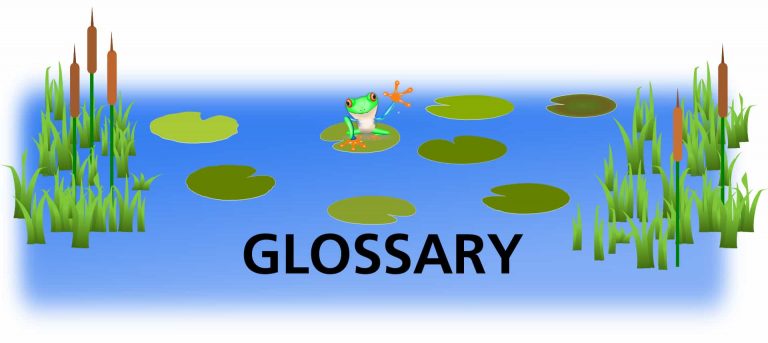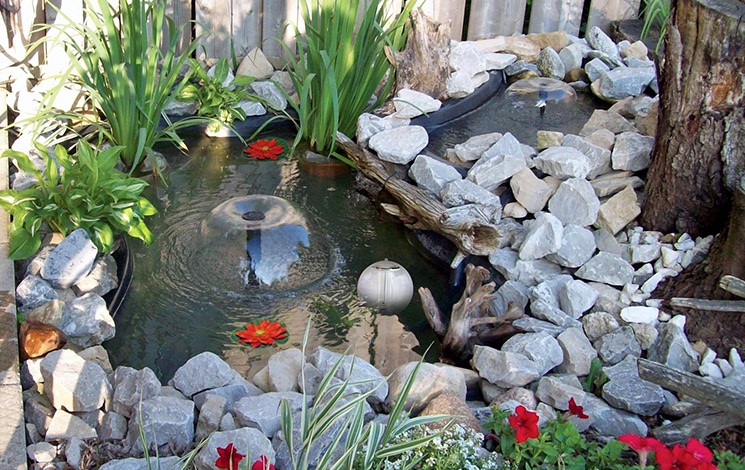
Floating plants, with their vibrant colors and graceful foliage, add a stunning visual appeal to your pond
Ponds are enchanting features that add natural beauty and tranquility to any landscape. Whether you have a small backyard pond or a larger one, adding floating pond plants can enhance its aesthetics, provide habitat for wildlife, and help maintain water quality. However, selecting the right floating pond plants can be a daunting task for beginners. In this guide, we will walk you through the process of choosing the perfect floating pond plants for your water feature.
Why Choose Floating Pond Plants?
Before delving into the selection process, it’s essential to understand why you should consider adding floating plants to your pond. Floating pond plants offer a plethora of benefits:
- Aesthetic Appeal: Floating plants, with their vibrant colors and graceful foliage, add a stunning visual appeal to your pond, creating a more attractive and harmonious environment.
- Water Filtration: These plants naturally filter pond water by absorbing excess nutrients, such as nitrogen and phosphorous, which can otherwise promote the growth of unsightly algae and waterborne pollutants.
- Oxygenation: Floating plants release oxygen into the water during photosynthesis, improving water quality and ensuring your fish and other aquatic organisms have enough oxygen to thrive.
- Shade and Cooling: They provide shade for your pond, preventing excessive sunlight from warming the water, which is crucial for maintaining a healthy ecosystem and keeping your fish comfortable.
- Habitat for Wildlife: Floating plants offer a safe haven for aquatic creatures, including frogs, insects, and small fish, contributing to the overall biodiversity of your pond.
Now that you understand the benefits, let’s explore the steps to choose the right floating pond plants:
- Assess Your Pond’s Characteristics
Before selecting any plants, it’s essential to assess your pond’s characteristics. Consider the following factors:
- Size and Depth: The size and depth of your pond will determine how many floating plants you can accommodate and which types will thrive. Larger ponds can support a wider variety of plants.
- Sunlight Exposure: Determine how much sunlight your pond receives each day. Some floating plants thrive in full sun, while others prefer partial shade.
- Water Temperature: The water temperature in your pond can vary depending on your location and the season. Make note of any extreme temperature fluctuations, as some plants are more sensitive than others.
- Water pH and Quality: Test your pond water for pH levels and quality. Some plants prefer acidic water, while others thrive in alkaline conditions. Water quality is also essential; clean water is crucial for healthy plant growth.
- Choose the Right Types of Floating Pond Plants
There are several types of floating pond plants to choose from, each with its unique characteristics and requirements. Here are some popular options:
- Water Hyacinth (Eichhornia crassipes): Known for its attractive lavender-blue flowers, water hyacinth is an excellent choice for nutrient absorption and shade. It’s a fast grower, making it effective at reducing algae.
- Water Lettuce (Pistia stratiotes): Water lettuce forms rosette-like clusters of leaves and is ideal for providing shade. It also absorbs excess nutrients from the water and adds a touch of elegance to your pond.
- Duckweed (Lemna minor): Duckweed is a small, free-floating plant that can quickly cover the water’s surface. While it’s excellent at nutrient removal, it can become invasive if not controlled.
- Water Lily (Nymphaea spp.): Water lilies are perennial favorites for ponds, adding beautiful flowers and elegant leaves to the water’s surface. They prefer calm, still water and come in various colors and sizes.
- Parrot’s Feather (Myriophyllum aquaticum): This submerged floating plant has feathery, fern-like leaves that can float on the water’s surface. It’s excellent for oxygenation and provides cover for fish.
- Consider Local Regulations
Before purchasing floating pond plants, check with local authorities or regulations that may govern the use of certain aquatic plants. Some plants may be invasive in your area, and their introduction into natural water bodies could have adverse ecological effects.
- Plan Your Plant Arrangement
Once you’ve selected your floating pond plants, it’s crucial to plan their placement. Consider the following tips:
- Plant Spacing: Ensure that you space the plants appropriately, allowing them room to grow without overcrowding. Overcrowding can lead to poor air circulation and stunted growth.
- Balance: Aim for a balanced arrangement of floating plants to ensure that no single species dominates the pond. This will create a more visually appealing and ecologically sound environment.
- Floating vs. Submerged: You can also consider a combination of floating and submerged plants for a diverse and vibrant pond ecosystem.
- Maintenance and Care
Floating pond plants, like any garden plants, require care and maintenance. Here are some essential care tips:
- Pruning: Regularly trim and remove excess growth to prevent overcrowding. This will allow your plants to thrive and maintain a healthy pond ecosystem.
- Fertilization: Some floating plants may benefit from occasional fertilization with aquatic plant fertilizer tablets. However, be cautious not to over-fertilize, as this can lead to excessive algae growth.
- Pest Control: Monitor your plants for signs of pests or disease and take appropriate action if needed. Quarantine new plants before introducing them to your pond to prevent the spread of pests.
- Winter Care: In colder climates, you may need to remove floating plants before winter to prevent freezing and damage. Store them in a protected area until spring.
Choosing the right floating pond plants is a rewarding endeavor that enhances the beauty and ecological balance of your pond. By assessing your pond’s characteristics, selecting suitable plants, considering local regulations, planning your arrangement, and practicing proper maintenance, you can create a thriving aquatic ecosystem that brings joy and tranquility to your outdoor space.
Remember that each pond is unique, so take the time to research and choose the plants that best suit your specific needs and preferences. With the right care and attention, your floating pond plants will flourish, ensuring a vibrant and thriving aquatic haven for years to come.
Your pond plants will do better if placed in the correct spot. Floating pond plants tend to be small to medium in size and move with the wind or current. Pond plants that float have hair-like roots. These dangle in the water, get their nutrients from the water and air and do not need any soil. These floating plants certainly help greatly in keeping water clear since they absorb nutrients from the pond water and do a good job of oxygenating water gardens.
Water Hyacinths, or the Water Soldier plant are examples of floating pond plants of this type. Floating aquatic plants assist with water clarification. Plants that float must be controlled since they tend to grow rapidly and get out of hand (especially in natural waterways). Some may even be proclaimed as weeds such as the Water Hyacinth in South Africa. One of the important dams namely Hartebeest Poort Dam is (was at least last time I checked) totally overgrown.
Floating Pond Plants, flowering in summer
- Azolla filiculoides … floating moss. An attractive plant changing in color during the season from pale green to red. Sold in individual portions or in larger trade packs.
- Eichhornia crassipes’Major’, floating water hyacinth. This plant resembles a hyacinth and has pale blue flowers carried on spikes above the spongy, bright green leaf stalks that keep the plant afloat. It is not hardy and should be removed to frost-free quarters during the autumn. Available from May onwards.
- Hydrocharitaceae … frogbit. A small floating plant with lily-like leaves about 15 mm across. Small, but attractive, with three petalled white flowers. These produce buds which sink to the bottom during autumn but rise the following spring to produce new plants.
- Pistia stratiotes … Rossettes of pale green velvety leaves and fine trailing roots. Not hardy and needs to be overwintered in warmth.
- Salvinia natans … Velvety leaves about 12 cm long, covered with fine silky hairs. Not hardy and must be overwintered in warmth.

Floating Pond Plants, flowering in winter and/or spring
- Lemna gibba … Larger form of Lemna minor with reddish tinged leaves.
- Lemna minor … duck weed. Small ovate fronds, light green above and dark green beneath. One rootlet hangs down into the water from each frond.
- Lemna trisulca … ivy leaved duck weed. Light green transparent fronds, oval in shape. The young fronds grow at right angles to the old ones.
- Stratiotes aloides … floating water soldier. An unusual plant resembling the top of a pineapple as the long, narrow serrated leaves grow in rosettes. The young plants are very attractive as the foliage is a reddish bronze colour.
- Trapa natans … water chestnut. Large rosettes of olive-green creeping foliage are produced from a nut, formed from last season’s flower.
- Utricularia vulgaris … bladderwort. Underwater floating insectivorous plant. Yellow flowers above the water.
Duck Weed, Water Lettuce, Water Chestnut are typical examples of floating garden pond plants.
Other categories of garden pond plants differing from the floating class can be broken up as follows:
- Oxygenators as a class of garden pond plants assist in keeping plant water clean and clear by absorbing nutrients. Potted oxygenators include Water Crowfoot, and Water Violet.
- Deep water pond plants the best known of which is the water lily
- Marginal water garden plants such as Iris, and Arum Lily which like to stand in water up to about 15cm (6). Some can grow quite tall and be blown over by the wind so you may have to weight the pot or crate down with stones.
- Shallow garden pond plants or water garden bog plants like Marsh Marigold, Iris, Water mint. These plants like water about 5 cm (2) deep and are good examples of pond plants.






